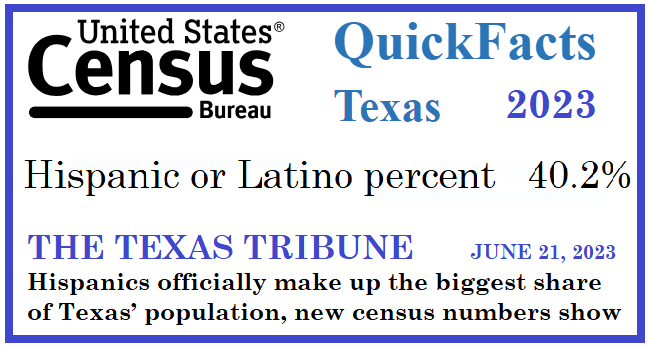An Abbreviated History Of Texas

During the Spanish Colonial Era of 1689-1821, Spain established missions to propagate Christianity among the indigenous people. The most successful missions were located in Bexar County, generally within the city limits of San Antonio.
In 1810, Mexico rebelled against the Spanish monarchy. On October 4, 1824, the Mexican Congress and the Supreme Executive Power signed the 1824 Mexican Constitution. Mexico was now a republic.
Translation of the Text of the Mexican Constitution of 1824, Article 50 “Promote the Enlightenment, ensuring limited time exclusive rights to the authors for their respective works; establishing Marine, Artillery and Engineers; erecting one or more establishments in which natural and exact sciences, political and moral, noble arts and languages are taught; without harming the freedom of legislatures for the arrangement of public education in their respective states” The Mexican Catholic Church was the state religion and the church was supported by the public treasury. However imperfect by modern standards, the Catholic educational efforts were there.
The Republic of Texas began in 1836, marked by the defeat of Mexican forces at the San Jacinto battle. Free public schools began in Nacogdoches as early as 1829 Boarding schools served as education providers for wealthy families. The Republic of Texas Constitution was adopted on March 16, 1836.
The Texas State Constitution took effect on February 15, 1876. Text of the Texas State Constitution, ARTICLE VII, Education–The Public Free Schools.
“A general diffusion of knowledge being essential to the preservation of the liberties and rights of the people, it shall be the duty of the Legislature of the State to establish and make suitable provision for the support and maintenance of an efficient system of public free schools.“
Mexican children have been welcomed to our Texas public schools, tuition-free, since 1876.
The Three Borders
Few Texans know that until recently, Texas and Mexico shared three borders. The geographical border that defines the political divide between Texas and Mexico is the Rio Grande River. The Spanish name for this geographical border is El Rio Bravo, La Frontera (the frontier). The other two borders are—were—immigration borders. The Mexican immigration border is approximately 30 miles inland from the geographical border.
Today, as it has been most of my life, Texans can freely travel to Mexico, shop, dine, tour, and visit places of interest within the confines of the Mexican immigration border without special permission. Your Allstate or State Farm auto insurance covers you as though you were on this side of the Rio Grande. Beyond the Mexican immigration border, you must purchase Mexican liability insurance for your motor vehicles.
Our U.S. Customs and Border Protection forces maintain checkpoints north of the Rio Grande, but our immigration border has seemingly vanished, but not without just cause.
Until recently, Mexican citizens freely crossed over the geographical border to shop on the Texas side. In fact, many Mexican families enrolled their children in Texas public schools; car pools served to transport Mexican children to and from their respective Texas schools and their Mexican homes.
My Mexican Classmates
Throughout my elementary school years in the 1950s and 1960s, Mexican families annually came to the United States to labor in the harvests of crops. Palacios ISD provided a first-year class at Central Elementary School for Spanish-language children. Miss Navarro would teach the standard classes in Spanish while also teaching the English language. Our second-grade through twelfth-grade courses were all in English.
As the harvest seasons moved north, Mexican moms would update their children’s academic manuscripts for use in the next city of residence.
This practice was a hold-over from the Bracero Agreement (1942-1964). The agreement provided entry only for male agricultural workers; mothers and children were allowed to accompany the male workers.
In earlier years, during the Mexican Revolution of 1910, a significant number of Mexican families fled to the State of Texas to escape the violence and bloodshed from Pancho Villa’s ruthless campaigns against the Mexican government and our U.S. government. Learn more about Mexican Warlord Pancho Villa here (ThoughtCo), here (National Park Service), and here (History.com).
The violence of the Mexican Revolution of 1910 drove Mexican families to seek refuge from the murderous violence in Texas, settling in Nacogdoches, San Antonio, Goliad, and Laredo.
Migrant farm workers settled throughout Texas, including in the Dallas/Fort Worth (DFW) Metroplex. My former Congressman Ralph Hall told me there were (are) Mexican families in Rockwall County, Texas, who migrated here during the Mexican Revolution of 1910. Learn more from TSHA online.
If You Do Not Know Texas History…
Our Texas population, including elected officeholders in Austin, immigrated from other states. I sense such folks view Mexican immigrants through the current lens of illegal immigration.
Spanish preceded the English language in Texas by 300 years or more. The Hispanic population is the ethnic majority in our state.
There were distinctive ethnic populations at the time of the Texas Revolution and before, Texians (non-Spanish settlers) and Tejanos (Spaniards and Mexicans). Tejanos and Texians fought side by side at the Battle of San Jacinto, where General Sam Houston defeated the Mexican army to win our independence from Mexico.
Tejanos were as much victims of the unconstitutional actions of Santa Anna as were the Texians. Tejanas (women) courageously attended the wounded Texians at the Battle of the Alamo. Tejanos (men) fought alongside Texians against the Mexican army.
Until 1964, social segregation set apart black Texans to “separate but equal” public education. Long before Texas society integration incorporated black Texans, the Tejanos also experienced societal segregation to a lesser degree than black Texans. MALDEF (1968) fought for Tejanos in the legal system. LULAC (1929), founded in Corpus Christi, fought for the rights of Tejanos in public education.
To The Point
Texas has a history and a duty to provide free public education for immigrant children, kindergarten through twelfth grade. As stated in the Texas Constitution, free public schools are essential to the preservation of the liberties and rights of all people. The Fourteenth Amendment, Section 1, assures equal protection of the laws to all persons.
Texas history, Texas law, Federal law, and common sense say we must and will provide free public education for immigrant children, regardless of their legal status.
John White
Rockwall, Texas

